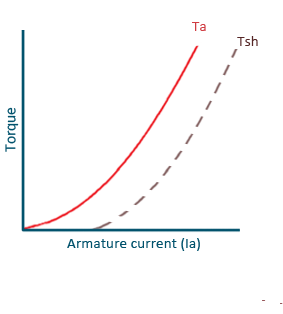DC Series motor produces a high starting torque therefore, it is used to drive heavy loads.
Why DC Series Motor Produce High Starting torque?
The field and armature winding of the DC series motor are connected in the series and carry the same current. The torque of the DC motor is proportional to the field current and armature current. In the case of the DC series motor, the torque becomes the square of the armature current. This is why the DC series motor is used to drive heavy loads.
Higher starting torque is required to drive high-inertia loads. Locomotive engines and bucket elevators demand higher starting torque for motion from a standstill position.

Construction of DC Series Motor
The DC series motor has a field winding and an armature winding. Both windings are connected in series and the same magnitude of current flows through both windings.
The field winding has few turns of thick wire as the full armature current passes through the field winding.

The DC series motor provides high starting torque because the field and armature winding are connected in the series and carry the same current.

The starting torque of the DC series motor is proportional to the square of the armature current. The armature current torque characteristics of the DC series motor are given below.

That is why the DC series motor can produce a high starting torque, and is preferred for driving heavy loads.
High-inertia loads, like cranes, need a high starting torque. Cranes use a DC series motor.
Read Next: